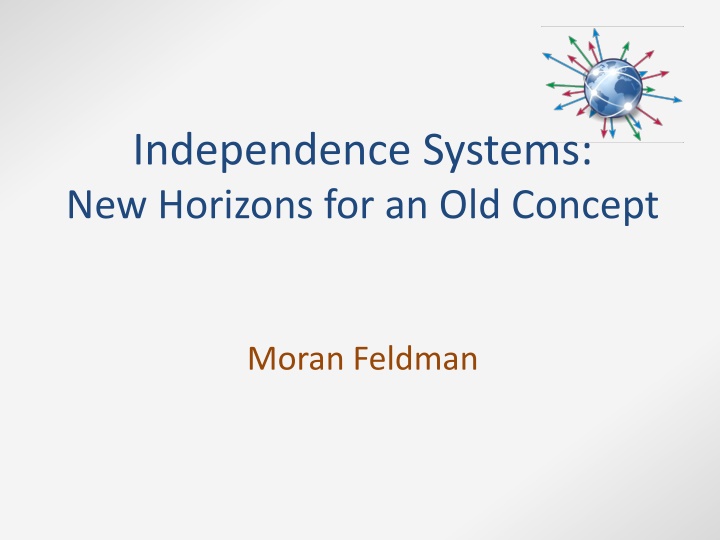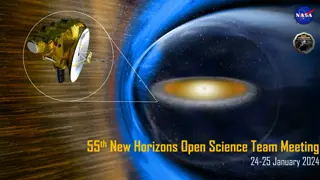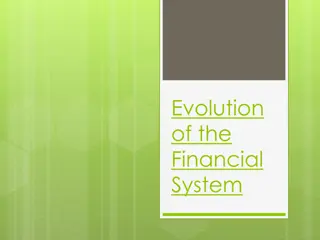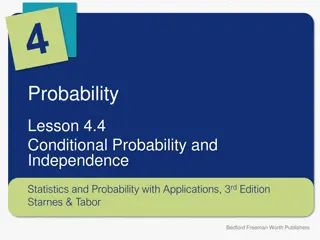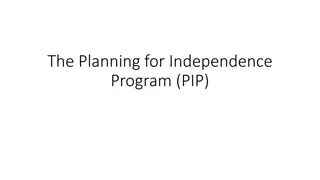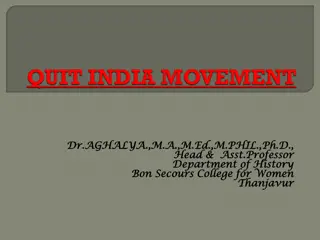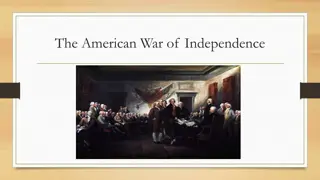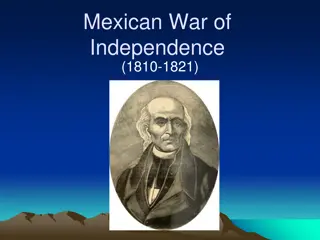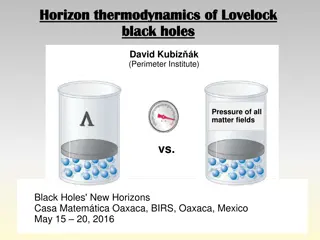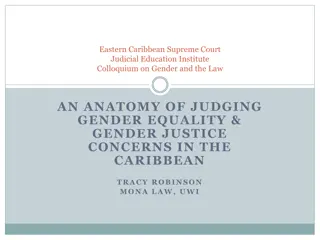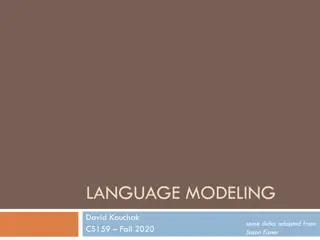New Horizons in Independence Systems
The concept of independence systems is explored in the context of combinatorial optimization, presenting various classes and approaches. The discussion includes k-systems, matroids, and extensions to weighted problems, emphasizing algorithms and approximations for finding maximum independent sets.
Download Presentation

Please find below an Image/Link to download the presentation.
The content on the website is provided AS IS for your information and personal use only. It may not be sold, licensed, or shared on other websites without obtaining consent from the author.If you encounter any issues during the download, it is possible that the publisher has removed the file from their server.
You are allowed to download the files provided on this website for personal or commercial use, subject to the condition that they are used lawfully. All files are the property of their respective owners.
The content on the website is provided AS IS for your information and personal use only. It may not be sold, licensed, or shared on other websites without obtaining consent from the author.
E N D
Presentation Transcript
Independence Systems: New Horizons for an Old Concept Moran Feldman
Combinatorial Optimization max w(S) s.t. S N S obeys a constraint C Given a ground set N. Another Approach Define general classes of constraints. Find an algorithm which is good for every constraint in the class. Standard Approach A different algorithm for every type of constraint. Matching Maximum Weight Spanning Tree Independent Set 2
Independence Systems To use this approach, we model a constraint with an independence system. (N, ) The collection of the feasible subsets of N. Called independent sets. Must obey A ground set of elements 1. If A B and B , thenA . 2. The empty set is independent. 3
Classes of Independence Systems Most well known: Matroids Tends to scare people away (for no good reason) A large zoo of additional classes: k-extendible k-exchange k-matchoid k-intersection etc. This talk: k-systems Generalizes all the other classes Simple definition 4
k-systems Terminology A base B of a subset N N is an inclusion-wise maximal independent subset of N . Matching is a 2-system. Implies that a maximal matching is a 2-approximation for the maximum matching. Definition An independence system (N, I) is a k-system if for every subset N N the ratio between the sizes of the largest and smallest bases of N is at most k. Easy Observations It is easy to find a base of N. Such a base is a k-approximation for the problem of finding a maximum size independent set. 5
Extension to Weighted Problems We need to choose a maximum weighted base. Most natural option: The Greedy Algorithm 1. Start with the empty solution. 2. While there are elements that can be added to the solution: 3. Pick among them the maximum weight one. 4. Add it to the solution. Results Greedy achieves k-approximation for the problem of finding a maximum weight independent set. [Jenkyns 1976] This is the best possible even for the unweighted problem. [Badanidiyuru and Vondr k 2014] 6
Analysis of Greedy It suffices to show that the i-th element picked by Greedy is at least as heavy as one of the k(i-1) + 1 heaviest elements of OPT. k elements k elements k elements k elements k elements k elements 3rd element picked as heavy as these accounts for these elements Heavy to light elements Proof Let OPTi be the set of the k(i-1) + 1 heaviest elements of OPT. Let Si-1 be the set of the first i-1 elements picked by Greedy. Si-1 cannot be a base of OPTi Si-1 because it is smaller by a factor of more than k compared to the independent set OPTi. Some element of OPTi can be added to Si-1. 7
Hardness Intuition N = I = { } Good Elements Bad Elements sets of size at most r and sets of size at most kr including only good elements Observations For a better than k approximation we must identify good elements. To identify good elements, we must find an independent set of size larger than r. If the good elements are chosen at random, we must check exponentially many sets to find such a set. 8
Are we done? The optimal algorithm for the problem was obtained 40 years ago. Then, why do we even talk about the problem? Greedy is a fairly simple and quick algorithm; but, in the era of Big Data, it is often not good enough. Over the years there have been some results achieving slightly improved results for special cases. For example, k/2 for weighted k-set-packing. [Berman 2000] Motivates studying the problem in Big Data models: Map-Reduce Streaming Sublinear time 9
(Semi)-Streaming Model An answer based on the input Input stream Algorithm Elements of the ground set. Main Obstacle The algorithm should use little memory. For a semi-streaming algorithm: linear in the maximum size of a possible output, up to a polylogarithmic factor. 10
Streaming in the Unweighted Case We can still kind a base by starting with the empty solution, and adding every arriving element if this does not violate independence. Achieves the optimal k-approximation. This is the best known even for the very special case of bipartite matching. 11
Algorithm for the Weighted Case We make the simplifying assumption that all the weights are integral powers of (1 + ) between 1 and n2 for an arbitrary small constant > 0. Can be removed via standard reductions at the cost of increasing the approximation ratio by O( ). Step 1 For every i between 0 and 2 log1+ n, find a base Bi of the elements whose weight is at least (1 + )i. Let Ei denote the set of these elements. Observation The size of Bi is at least |Ei OPT| / k. 12
Algorithm for the (cont.) Step 2 Run the greedy algorithm on the union of the Bi s. Approximation Ratio Analysis Let Si be the solution of greedy after adding the last element of weight (1 + )i. Observe that Si is a base of ( jBj) Ei. Thus, |Si| |Bi Ei| / k = |Bi| / k |OPT Ei| / k2. In other words, the number of elements in the solution of weight (1 + )i is at least as large as the number of such elements in OPT, up to a factor of k2. One can observe that this implies k2-approximation. 13
Warping It Up Space Analysis Our algorithm stores log1+ n2 = O( -1 log n) independent sets (the bases B0, B1, B2, ). For a constant , this is a poly-logarithmic term, so the algorithm is a semi-streaming algorithm. For many special cases (k)- approximation is known. It is unknown whether this is tight. Theorem [Crouch and Stubbs (2014)] There is a (k2 + )-approximation semi-streaming algorithm for the problem of finding a maximum weight independent set in a k-system. 14
? ? Questions ? ? ?
